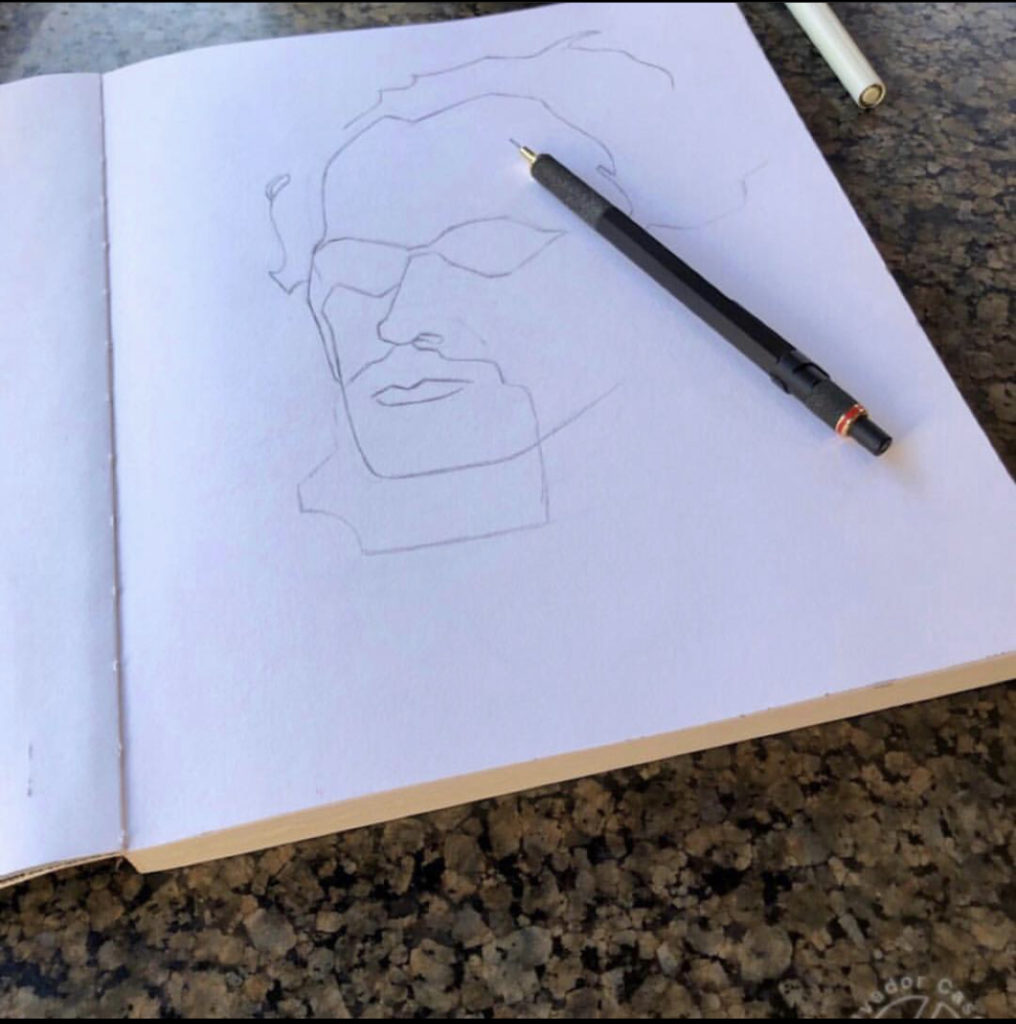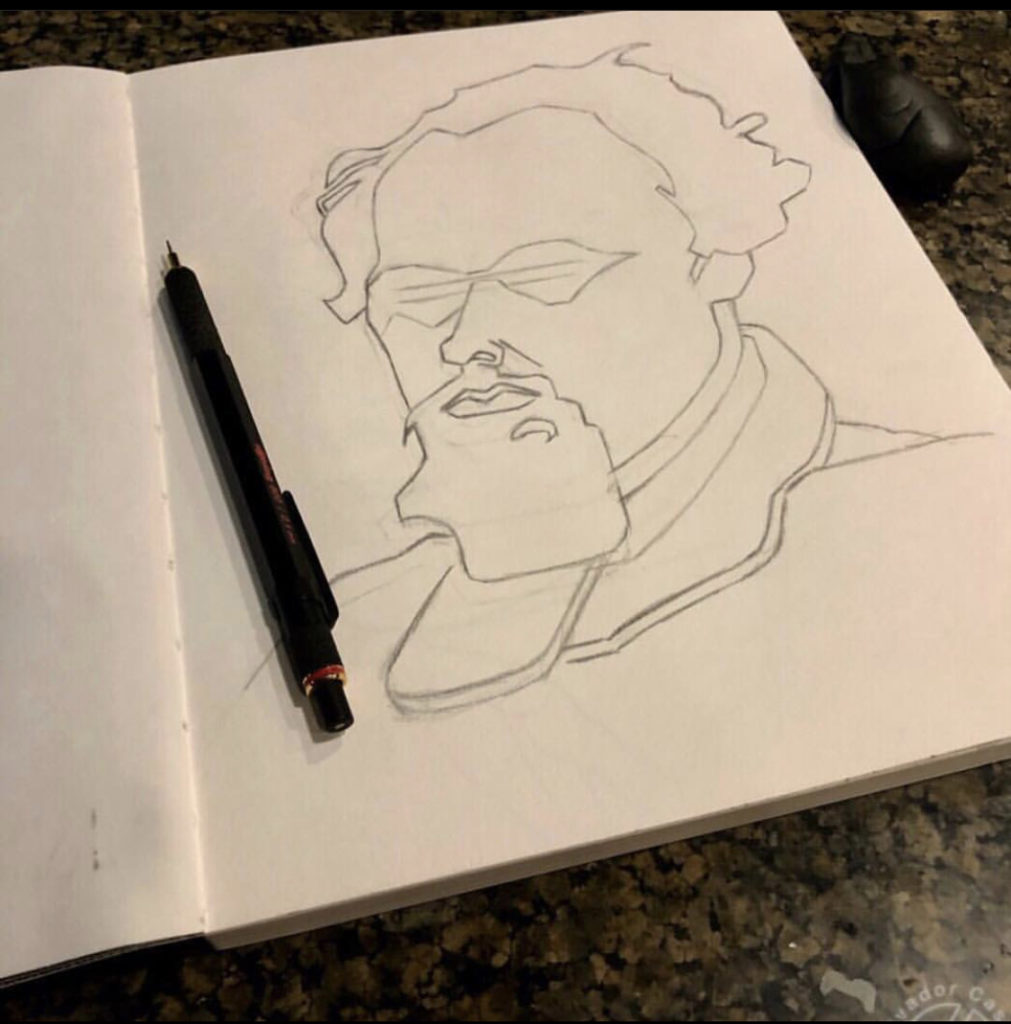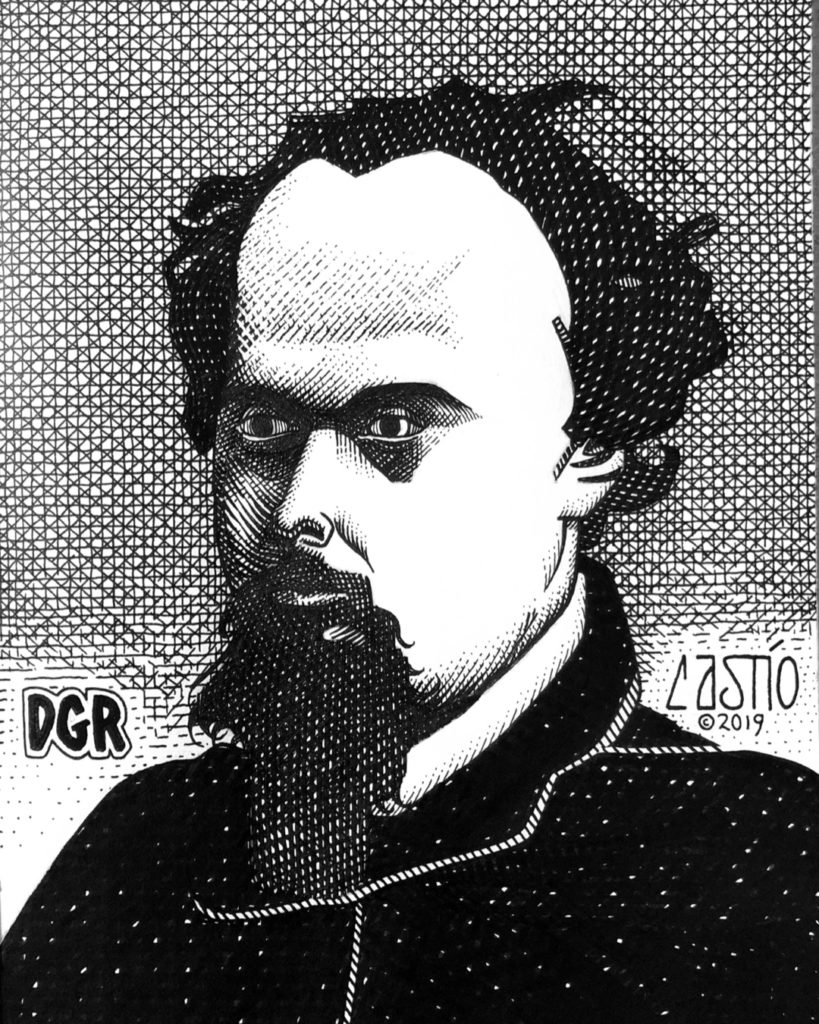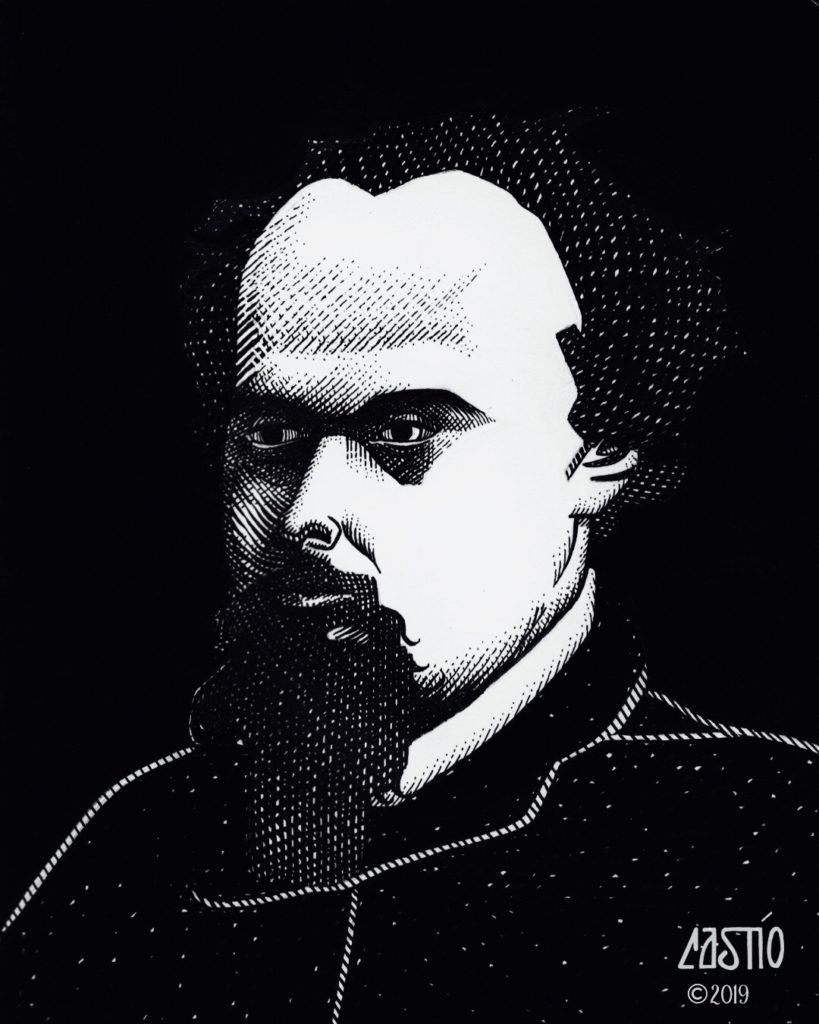People often inquire about how I go about creating a drawing, so I thought I’d take this week’s post to answer that often asked question.
The drawing that I’ll be using as an example for this post is my brooding pen and ink portrait of painter and poet Dante Gabriel Rossetti, cofounder of the English Pre-Raphaelite Brotherhood. When I decide to draw a portrait of someone, the person has to intrigue me in one way or another – there has to be a fair amount of depth and intrigue to them. If you know anything about Rossetti, you’ll understand why I chose to draw him: painter, poet, translator, visionary, and one of Victorian England’s greatest figures; the choice to draw him wasn’t difficult.
The first step in my process is the search for good photo reference. This is a practice that was drilled into my head when I was an illustration major in art school and one that I’ve not abandoned despite no longer considering myself an illustrator. Fortunately, I found a great portrait of DGR by preeminent Victorian photographer, Frederick Hollyer. The next step is the preparatory pencil sketch where I establish all the angles and proportions of the face and where I start to indicate facial features. I usually do this using a Rotring 800 mechanical pencil using HB lead. I did my drawing in a Stillman & Birn softcover Alpha sketchbook. SB uses really sturdy paper so things like repeated erasing usually isn’t a problem. SB sketchbooks also take ink really well. This first stage is often the hardest as I have to make sure that all the angles and proportions are just right so that I don’t have to go back and correct mistakes later. Correcting mistakes that could have been avoided is just a waste of my time.
In the next phase, I start to work up the subject‘s features in order to bring forth their personality. Features are a tricky thing; again, lots of attention must be paid to them at this stage so that the personality of the subject comes through. Setting a drawing aside for a day or two will aid greatly in picking out any mistakes that have been made. Once the preliminary drawing is at a solid stage of completion it’s time to move on to the final and most tedious stage: rendering in ink.
The majority of my ink work is done with Koh-I-Noor Rapidograph technical pens. I favor point 0/.35 for most of my work. I prefer Rapidographs because they use real ink and are refillable. I’m no fan of supposedly modern disposable pens like those made by Micron. I tried them years ago and they felt flimsy and unreliable. My Rapidographs are solid pens that haven’t failed me in 35 years.
The first thing I do when I start to render my drawing in ink is to outline the subject’s features. Once that’s done, I start to thicken my line work by going over my lines to add variety and depth to my them. At this point I start putting in the darkest values in so that I can contrast all lesser values against them. I repeat this until I achieve an overall and pleasing balance. Once this balance is achieved, I correct any and all mistakes with Winsor Newton white designer’s gouache.
I’ve included my original version of my portrait and the updated one I did a few months later. The drawing didn’t feel right when I finished it; some of the proportions were off and the value balance was off. Using gouache, I whited out a portion of his forehead at the hairline and shortened it. I also whited out some of the hair on the back of his head as well. In addition, I darkened the background. These changes really brought the drawing together and brought out that brooding quality that’s evident in Rossetti’s features.
Pen and ink is amongst the most challenging of mediums to work with. It’s similar to watercolor in that everything must be well thought out before the actual rendering begins and because there’s very little room for mistakes. Yes, you can white out mistakes with gouache but it’s better not to make those mistakes to begin with. Pen and ink is also challenging to work with because of the difficulty in achieving subtleties in shading. Unlike pencil, pen and ink requires a lot more work in order to achieve this. If there’s one thing that’s true about pen and ink it’s that a well executed drawing has a definitive power to it that is unique to this drawing medium.




